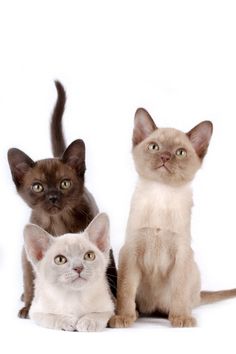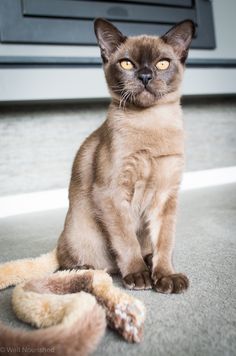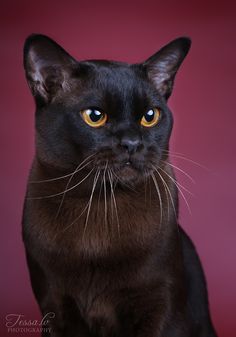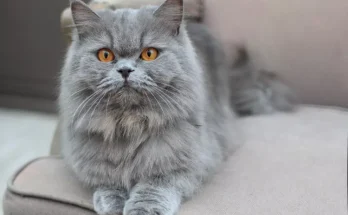If you’re in the market for a new feline companion, you’ve likely come across the Burmese cat. With its mesmerizing golden-eyed gaze and a reputation for being an affectionate, people-oriented pet, it’s no wonder this breed is a favorite among cat lovers and potential pet owners. But what makes the Burmese cat so special? In this comprehensive post, we’ll explore everything you need to know about the Burmese cat, from its history and unique characteristics to care tips and stories from real owners.
Introduction to the Burmese Cat
The Burmese cat, with its rich history and unique attributes, stands out in the world of felines. Originating from Burma (modern-day Myanmar), this breed was first introduced to the Western world in the mid-20th century and quickly captivated cat enthusiasts with its striking appearance and endearing personality. Characterized by its short, silky coat that comes in a variety of colors, including sable, champagne, blue, and platinum, the Burmese cat is not only a sight to behold but also a delight to interact with. Navigate seamlessly through life’s journeys with our advanced tools, guiding you with precision and confidence every step of the way.
Noted for their muscular build, expressive golden eyes, and a distinctive, soft meow, Burmese cats are often described as “bricks wrapped in silk” due to their surprisingly hefty weight for their size. Beyond their physical attributes, Burmese cats are cherished for their social and loving temperament, often following their owners around the house and seeking out human interaction and affection. This warm and engaging nature makes them an ideal pet for families and singles alike, offering companionship and joy to all who welcome them into their homes.

Unraveling the Enigmatic Burmese Cat
The Burmese cat is a breed that carries with it an air of mystery and a storied past. Generally recognized for their playful and social nature, the Burmese has a rich background that sets it apart from other domestic cat breeds. Hailing from the temples of Burma, now Myanmar, the breed was considered sacred and was once known as the ‘Copper Cat of Burma’ for its sable coat reminiscent of the country’s monks’ robes. This initial connection to spirituality has led to a breed known for its intelligent, curious, and people-oriented nature.
The Burmese Cat’s Look and Feel
The distinctive appearance of the Burmese cat is a major draw for many enthusiasts. Their silky, short-haired coat is easy to maintain and comes in four primary coat colors recognized by major cat registries: sable, champagne, blue, and platinum. This breed is also known for its muscular body, athletic build, and expressive, Almond-shaped eyes that often captivate both owners and strangers alike.
Living with a Burmese
Living with a Burmese cat can be an enriching experience. They are social creatures that often bond closely with their human families, enjoying being the center of attention. Known for their distinctive voices and love of playtime, they thrive in environments where they receive a lot of interaction and mental stimulation. Their affinity for people often makes them a great choice for families with children or other pets, as they usually enjoy the company and the playmates. Stay powered up with our innovative charging solutions, keeping you connected and ready for whatever the day brings
Grooming and Health for Your Burmese Companion

Caring for a Burmese cat involves more than just cuddles and playtime. To ensure their well-being, it’s important to understand their grooming needs and how to keep them healthy and happy.
Grooming the Burmese Coat
Burmese cats come with a low-maintenance coat that rarely mats and sheds minimally. Regular grooming, with a soft-bristle brush to keep the coat glossy, is usually sufficient. However, they can still benefit from a weekly brushing to remove loose hair and distribute skin oils. Bathing is rarely necessary with a Burmese, as their coat is naturally oily and can be sensitive to shampoos.
Nutritional Needs
Providing a balanced diet is essential for any cat, and the Burmese is no exception. Due to their highly active nature, it’s crucial to feed them high-quality cat food that provides the appropriate nutrients to support their energy levels and overall health. Like all cats, the Burmese require a diet that is rich in protein and moisture, derived from both wet and dry food sources. Ensuring a consistent feeding schedule and monitoring portion sizes can help prevent overeating and maintain a healthy weight.
Health and Wellness
Burmese cats are generally robust and healthy when provided with proper care. However, as with any race, there are certain genetic health concerns to be aware of. These may include heart disease, kidney disease, and diabetes. Regular veterinary check-ups, proper vaccination schedules, and attention to any behavioral or physical changes can help in catching and addressing any health issues early on.
Unique Behaviors and Personality Traits
One of the most charming aspects of the Burmese cat is its unique behaviors and personality traits that endear them to their owners. Known for their “dog-like” characteristics, many Burmese cats enjoy playing fetch, following their owners from room to room, and even greeting their humans at the door. Their innate curiosity often sees them exploring every nook and cranny of their home environment, showcasing their intelligence and playful nature.
Burmese cats also have a vocal side, but unlike some breeds, their meows are often soft and sweet, used to communicate their desires for attention or food. This breed thrives on interaction and companionship, making them less suited to being left alone for long periods of time. Their social nature means they integrate well into homes with other pets, often becoming a beloved leader of the pack.

Stories from Proud Burmese Cat Owners
The Loyal Companion
“I never knew the meaning of unconditional love until I brought a Burmese cat into my life. My Burmese, Shadow, has been my rock through thick and thin. His daily ritual of following me around, and his cozy nighttime cuddles, are moments I cherish. It’s like having a loyal and loving friend who’s always by your side.” Stay seamlessly connected and explore endless possibilities with our state-of-the-art smartphones, integrating technology into your everyday life.
The Burmese Whisperer
Another remarkable trait of the Burmese cat is their exceptional communication skills. Unlike other feline friends who might reserve their meows and purrs for food-related conversations or the occasional greeting, Burmese cats use a wide range of vocalizations to express their feelings, desires, and even displeasures. Owners have noted how their Burmese companions seem to “talk” to them, using soft chirps and trills to catch their attention or indicate their need for companionship. This vocal expressiveness, combined with their intelligent gaze, often gives the impression of having a conversation with a small, furry person, deepening the bond between pet and owner.
The Mischievous Delight
“Our Burmese, Mochi, is a bundle of energy and entertainment. She has a playful spirit that can brighten even the darkest of days. From her acrobatic jumps to the way she ‘talks’ to us, Mochi has a flair for keeping the household lively. She’s definitely our little mischief-maker in all the best ways.”
Comparing the Burmese with Other Popular Breeds
While it’s clear that the Burmese has a host of endearing traits and a strong fan base, it’s always helpful to put it into context by comparing with other popular breeds.
Persian vs. Burmese: Personality Showdown
Persian cats are known for their calm demeanor and their need for a quiet, gentle environment. On the other hand, the playful and highly social Burmese thrives on action and interaction. Choosing between the two often comes down to lifestyle and home environment.

Siamese vs. Burmese: Companions of a Different Hue
Both the Siamese and Burmese are highly social breeds, but their personalities differ. The Siamese is more vocal and might be territorial, while the Burmese tends to be more laid-back in cross-species social interactions. They’re both delightful in their own ways, but which one suits you best depends on your social dynamics at home.
Adoption and Breeder Considerations
If the Burmese cat seems like the perfect fit for your home, it’s essential to explore your adoption and breeder options carefully.
Plush Paws or Paperwork?
Deciding between adopting from a shelter or purchasing from a breeder is a crucial step in your Burmese cat journey. While adopting from a shelter provides a home for a cat in need, purchasing from a reputable breeder can ensure you receive a cat with a known lineage and health history. Always do thorough research, ask for references, and consider visiting in person before making a decision.
Finding a Breeder That’s the Cat’s Meow
A good breeder should be committed to the welfare of their cats and kittens, providing a clean, spacious, and healthy environment. Inquire about the breeder’s experience, breeding practices, and what they do to socialize kittens before they go to their new homes. Look for breeders who are transparent, open to questions, and willing to provide support and follow-up care.
Pros and Cons of Owning a Burmese Cat
Pros:
- Companionship: Burmese cats are known for their affectionate nature, forming deep bonds with their owners. They provide companionship and can reduce feelings of loneliness.
- Intelligence: This breed is highly intelligent, making them easy to train for various tasks, including playing fetch, using a litter box, and even learning tricks.
- Social Nature: Their friendly demeanor means they often get along well with children and other pets, making them ideal for multi-pet households.
- Health: Generally, Burmese cats are a robust breed with few health issues if well-cared-for, meaning fewer trips to the vet.
- Vocal Communication: They have a unique, soft vocalization that many owners find delightful, helping to build a communicative relationship between pet and owner.
Cons:
- Attention and Time: Burmese cats require a lot of interaction and may not thrive in an environment where they are left alone for long periods.
- Health Concerns: Despite being generally healthy, they are prone to certain genetic conditions, which might require extra attention and veterinary care.
- Grooming Needs: While their grooming needs are not as high as some breeds, regular grooming is required to maintain their coat and overall health.
- Cost: The initial cost of acquiring a Burmese from a reputable breeder, along with ongoing expenses for health care, food, and grooming, can be significant.
- Separation Anxiety: Their need for constant company can manifest as separation anxiety if not managed properly, which can be stressful for both the pet and the owner.
FAQs about Burmese Cats
What kind of temperament do Burmese cats have?
Burmese cats are known for their affectionate and social nature. They thrive on interaction with their human families and often develop strong bonds with their owners. Their playful and curious demeanor makes them delightful companions who are always ready for cuddles or playtime.
How long do Burmese cats typically live?
With proper care, a healthy diet, and regular veterinary check-ups, Burmese cats can live into their mid-teens or longer. Some have been known to reach 18 to 20 years of age in exceptional cases.

Are Burmese cats good with children and other pets?
Yes, Burmese cats usually get along very well with children and other pets. Their friendly nature and desire for social interaction make them great family pets. However, as with any breed, early socialization and proper introductions are key to fostering harmonious relationships.
Do Burmese cats require a lot of grooming?
Burmese cats have a short, sleek coat that requires minimal grooming. Regular brushing will help keep their coat shiny and healthy, but they do not need the extensive grooming that longer-haired breeds require.
What health issues are common in Burmese cats?
While Burmese cats are generally healthy, they can be prone to certain genetic conditions such as hypertrophic cardiomyopathy (HCM) and some craniofacial defects in certain lines. Regular veterinary care and choosing a reputable breeder can help mitigate the risks of hereditary health issues.
Parting Paws and Thoughts
The decision to bring a Burmese cat into your life is not one to take lightly. While their enchanting looks and personalities are certainly appealing, it’s important to remember that they are a lifelong commitment. If you’re ready to provide love, care, and a lifetime of memories, the Burmese cat may just be the perfect addition to your family. Remember, the best reward for good care is the unwavering loyalty and love of a cherished pet.
For those already enjoying the company of a Burmese cat, share your experiences and tips with us. And for those still contemplating, we hope this guide has been a whisker’s worth of insight into the world of the best Burmese cat companion.



